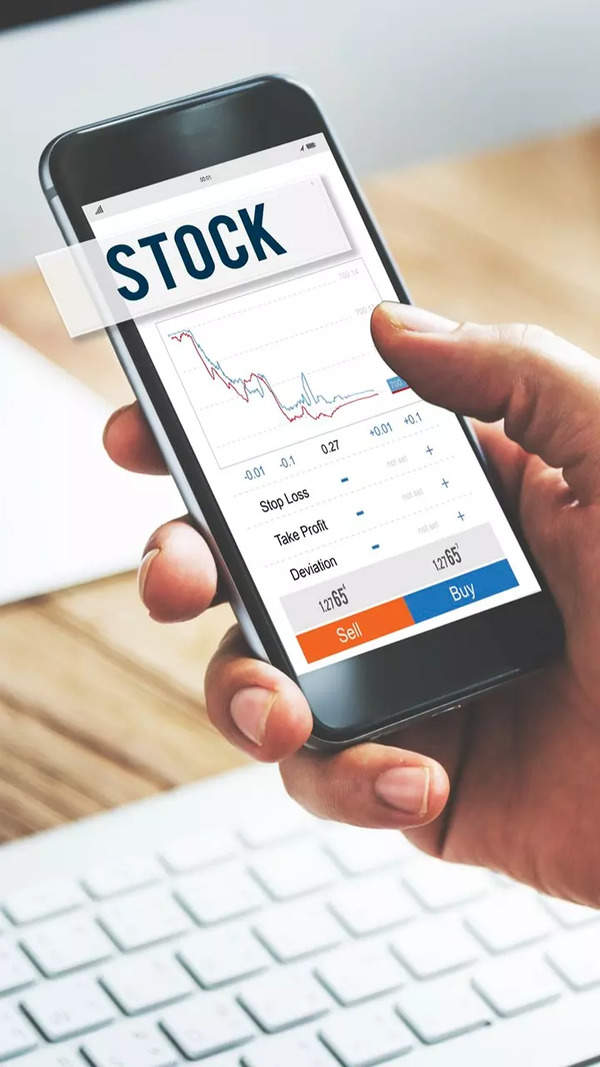- News
- Business News
- India Business News
- Protect your financial goals amid market volatility: Here's how
Trending
This story is from August 19, 2019
Protect your financial goals amid market volatility: Here's how
The recent volatility in the stock market, triggered by global and domestic factors, has made investors jittery. It has also highlighted the fact that the market mood can change rapidly and torpedo your financial goals if you are not protected.

(Representative image)
Similarly, if inflation assumptions go wrong, your plans can be wrecked. Consider the goal of your child’s higher education in 10 years. If the current education expense is ₹20 lakh and you assume an inflation rate of 5%, the cost will grow to ₹32.5 lakh. However, if inflation shoots to 8%, the goal cost will rise to ₹43.2 lakh.
Though you need to assume correct inflation and return figures while planning goals, you have no control over the final outcome because no one can predict how the markets will perform. Hence, building a buffer is the best way to protect your goals from the market vagaries.
How much do you require?
“A cushion of 15-20% of the future goal value is enough,” says Amol Joshi, founder, PlanRupee Investment Services. For instance, if you have estimated a need of ₹20 lakh in 10 years, invest in a manner that you earn at least 15% more, which would be ₹23 lakh in this case. This way, even if the assumed return or inflation stray off the mark, you will be able to meet your goal. Calculate the cushion for each goal and add up to get the aggregate value of cushion for all goals.
How to calculate the buffer amount?
There are rules to define how you should calculate the size of your cushion.

Importance of goal: The more critical your goal, the higher the buffer.
Time horizon: You need a small cushion for a goal with a flexible deadline or where the money is needed over a long time frame. You need a bigger buffer where the deadline can’t be extended.
Nature of withdrawal: The buffer will depend on whether you want the money at one go or in instalments. Your child’s marriage means you will need the money at one go and a higher cushion is imperative. Education expenses on the other hand, are spread over several years. Retirement planning allows maximum flexibility. Even if the markets are down when you retire, you can hold on to your investments and redeem only when the market recovers.
Asset class: Most people recommend the equity route for long duration goals because expected returns are higher. However, volatility is also high. You need more cushion if you are trying to achieve goals through volatile asset classes. Safe debt products generate much lower returns and need higher investible surplus.
Debt products can be split into two types. The products in which the return depends on market movements, such as debt mutual funds, and fixed return products like fixed deposits and the PPF. The need for cushion comes down if one is using safe debt products like the PPF, where the principal and interest are guaranteed by the government. However, you will still need to build a cushion because the probability of the PPF rates coming down in the future is high.
Reduce the need for cushion
Creating a cushion means you need to invest more. What if you don’t have the funds to create a buffer? “If you are not able to make additional investments, reduce the need for a cushion by having a very strict exit or reduction strategy,” says Joshi. If you are using the MF route, you can exit or reduce by using systematic withdrawal plans (SWP) or systematic transfer plans (STP).
STPs or SWPs can be a good solution if the market plummets when your goal is near. “Move investments slowly and in chunks. By doing so, you will not miss out the rally in the middle,” says Joshi.

When should you start equity reduction?
In case of a five-year goal, the shift to safer asset classes can be done during the last year, in case of a 10-year goal, it can be done in the last two years, and in the last three years for a 15-year goal. However, the shift will reduce the expected return profile. This is because the returns from safer asset classes will be much lower than from equities. If one assumes 12% returns from equities and 7% from debt, the average return in the case of a 15-year goal will come down to 11.51%. This fall will force you to invest more, but the increase will be nominal.
Assume less to reduce cushion
The need for a cushion arises because most people assume a return of around 15% from equities and 8% from debt. The average, however, is only around 12%. So, investors need to moderate their return expectations. The 12% return is before tax and one needs to adjust for the long-term capital gains (LTCG) tax of 10%.
The reduction in aggregate returns because of the shift to debt close to a goal is another factor. Return assumption of 8% is on the higher side because we are in a falling interest rate regime and this should be moderated to a realistic 7%.
Taking a conservative or realistic approach to inflation is another way to reduce the need for a cushion.
How to manage the cushion
The cushion should not be confused with a contingency fund. Since it is a part of long-term goals, it should be invested in growth assets like equities and debt. Should you manage cushions as part of goals or at an aggregate level? Experts say it is better to manage the cushion at an aggregate level. Since we are working with assumptions, there will some goals with additional corpus and others with a lower corpus. Under-achievement or over-achievement in a goal can happen due to the change in goal itself. The main advantage of the aggregate strategy is that the additional gain in a goal can be shifted to the aggregate cushion and used later.
End of Article
FOLLOW US ON SOCIAL MEDIA















